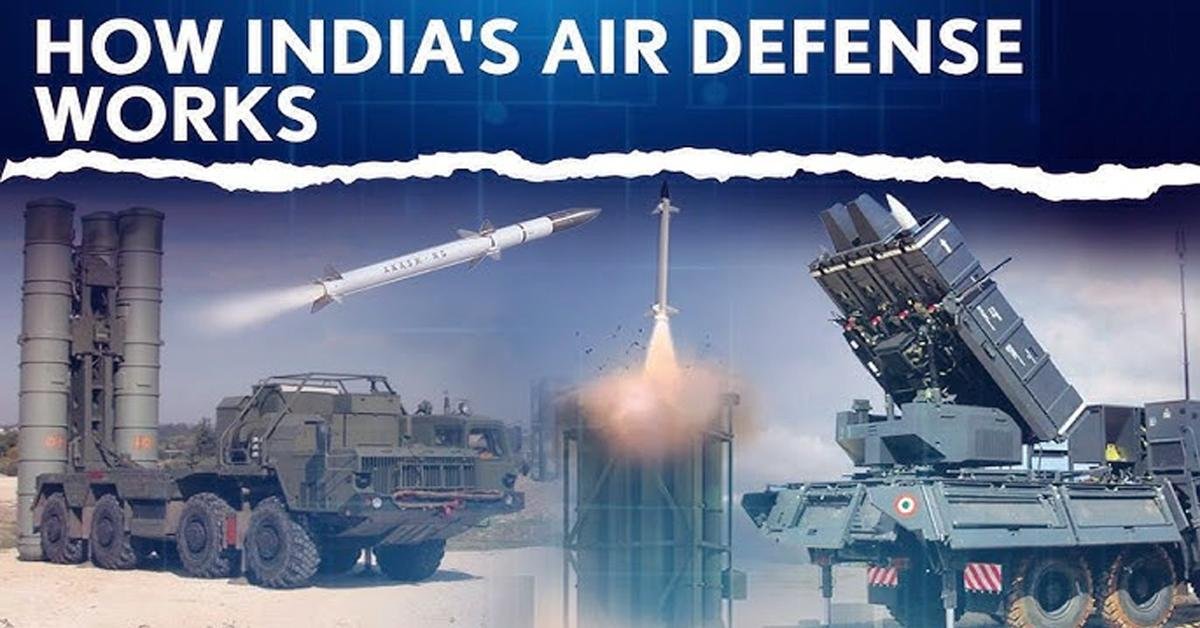India and Pakistan Administration analyst Harrison Caste has written in The National Interest that India is one of the few countries that has an anti-ballistic missile system. India has two types of missiles in its missile defense system. First is Prithvi Defense Patrol Missile, which stops missile attacks at high altitude, and second is Advanced Air Defense Aid, which stops low-altitude missiles. India’s anti-ballistic missile system is expected to be capable of stopping missiles coming from a distance of at least 5000 kilometers. India has also developed Brahmos and Brahmos 2 hypersonic cruise missiles in collaboration with Russia, and these can be launched from land, air, sea, and aircraft platforms. Harrison Caste says that India has many options of missiles equipped with conventional and nuclear weapons, and can also stop missiles. On the other hand, Pakistan also has many options for conventional and nuclear weapons. It is said that both countries have advanced their missile capability given the threats from the other, but unlike India, Pakistan does not have the option of IBM. Many defense analysts believe that Pakistan. There is not much need for this either. Harrison Castle says that Pakistan does not need much from India. Pakistan’s missile capability is capable of achieving regional targets. India’s well-known defense expert says that if the matter comes to IBM, then nothing will be left. Defense expert says that the flying time of IBM is 15 to 20 seconds. ISBA is a strategic weapon, and India has developed it keeping China in mind. When India conducted nuclear tests in 1998, Atal Bihari Vajpayee had said the same thing in a letter written to Tintin. Pakistan has made the Shaheen series missile in collaboration with China.
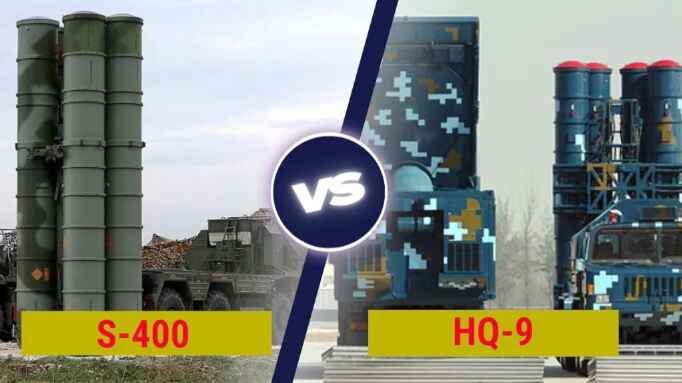
Pakistan is also working on an anti-ballistic missile system so that we can face India. Harrison says that Pakistan has HQ 9B, but if India uses Brahmos, it will not be easy for Pakistan to stop it. Opposition MPs have been expressing concern about the Brahmos supersonic missile in Pakistan’s Parliament. In 2022, India said that one of its missiles was accidentally launched towards Pakistan. Then Pakistan’s National Security Advisor Mor Yusuf had said that a supersonic projectile had fallen in Pakistan on the border from a height of 40,000 feet. This missile was flying near the route of international and domestic commercial airlines. It is a very irresponsible statement that India did not even inform Pakistan about this. India has attacked from its territory instead of entering Pakistan and attacking. The biggest thing is that this time India has attacked Pakistan’s Sindh and Punjab. Regarding the missile capability of India and Pakistan, experts say that India has BMD cells, ballistic missile defense, and Pakistan does not have it. However, BMD is not always 100 percent successful. In such a situation, we saw in Israel that their Iron Dome had failed in some cases. Despite this, BMD cells will be useful in stopping us. India has both strategic and conventional missiles. There are many types of missiles, like the Agni strategic missile and the Brahmos conventional missile. If we compare them with Pakistan’s Gauri and Babar, then they are far ahead in killing capacity. India’s air defense system is also good. Defense experts say that India’s air defense systems, such as Akash and S-400, are very less. Pakistan does not have such an effective defense system, and they do not think that Pakistan will attack Indian military bases
Four-layered system protects from Pakistan’s attack: How does India’s air defense system work? know full details from S-400 to Igla-S
Pakistan attacked 15 military bases of India, but India’s air defense system foiled Pakistan’s attacks. This is the invisible team of all India. How is India’s skies protected?
And what is India’s air defense system? India’s entire air defense system works like an integrated network, that is, it is interconnected. There are many parts of this network, like India’s radars, intelligence devices that catch the signals of enemy weapons, electro-optical sensors, jammers that jam enemy radio signals, high-energy low-spectral systems, and air defense missile systems. This entire network works in steps. First, identify the threat and then alert. India has many radars for sea and civil use. The first work of these radars is that radar plus electro-optical sensors catch every movement of the enemy, that is, track the missile, etc., and detect its speed, its track, and its other features. Jammer plus intelligence devices blind the enemy’s drones, that is, they destroy command and control. Second, planning which weapon will be used. The command center decides how big the challenge is and which weapon will be fit to deal with it. Third, taking action and destroying the missile drone in the air itself. Their goal is to eliminate any threat as high up in the air as possible and to use the right weapon by calculating the height and distance with special technology, such as launching an interceptor missile or blasting a dangerous ballistic missile with S400. If the enemy’s missile or drone comes very close or at a low altitude from the ground, then short-range anti-missile systems, rocket gun fire, or a tank can also be used for this. For this, India has weapons that work in four layers. Player One Long Range Inception. This is the outermost layer of India’s air defense. For this, India has created a ballistic missile defense program with the help of DRDO.
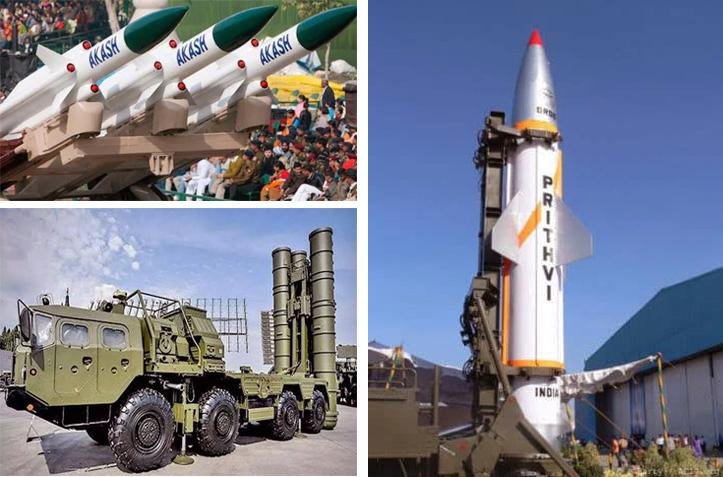
Two main weapons work under this – Prithvi and Defense. This is an anti-ballistic missile. It destroys ballistic missiles in the air at an altitude of 50 to 150 kilometers, coming outside the Earth’s atmosphere. Second Advanced Air Defence: It targets those ballistic missiles that miss from the position. It destroys missiles at an altitude of 15 to 40 km. Layer Second Intermediate Range Interception: Its range is 70 to 400 km. In this range, drones, jets, or any other target can be destroyed. Two types of weapons work in this layer, S-400 and Barak 8. The third layer of India’s defence is Short Range Interception, in which targets 15 to 70 km away can be destroyed. Under this, there are three main weapons: Akash Spider and Kar. The system, which attacks from a mobile vehicle launcher, can be moved from one place to another in a very short time. Layer 4 Point Defence System: It works when the target comes very close. It includes short-range missiles, anti-aircraft guns, and Ganesh, which destroys targets that come very close. Apart from this, India has some weapons from the Soviet era that can attack nearby targets with a Sati method.
Why could Pakistan not stop India’s missile attacks?
You must be aware of Israel’s famous defense system, the Iron Dome or David’s Sling, which is called an advanced missile shield. In the event of war, the air defense system of any country is very important. The defense system includes anti-missile systems as well as equipment that detects and monitors attacking vehicles. India attacked several places in Pakistan and Pakistan-administered Kashmir under Operation Sindoor a day earlier. India says that its targets were terrorist hideouts. India did not clarify what type of weapons were used in the attack, but Pakistani military spokesman Lieutenant General Ahmed Sharif Chaudhary said that India killed a total of 24 people using various weapons at six places. Meanwhile, according to the London-based International Institute of Strategic Studies, Pakistan has recently acquired at least 20 modern J10 Ladka aircraft from China, which are equipped with 15 missiles. As far as air defense is concerned, after 2019, India acquired the Russian S-400 anti-aircraft missile system, while Pakistan received 9 air defense systems from China. According to Radio Pakistan, the Pakistani Air Service recently,, in a statement, it said that its air defence capabilities include advanced aerial platforms, high to medium altitude air defence systems, and unbanded aerial vehicles. Apart from these, it does not have any such defence system when it comes to space, cyber, and electronic warfare, as well as stopping terrorists. Eastern Commodore Adil Sultan told BBC that no such defence system has been developed in the world so far that provides foolproof security, especially in such a situation when countries like Pakistan and India share borders, and at some places this distance is of a few metres. He said that it is possible to stop 100 per cent air to ground missiles there. He said that although these modern defence systems are very effective, but it is not possible to establish such a defence system on the more than 2500 kilometre long eastern border, such that it is 100 per cent possible that no missile can enter here and hit the ground. And if we talk about air-to-ground missiles, they have become very modern these days. He said that their speed has become very fast, which can reach 36 kmph. 75 kilometers per hour to 11025 kilometers per hour, and no country, including America, Russia, or China, can stop such a high-speed missile. Another difficulty in stopping air-launched missiles is that their flight duration is very short, and you have very limited time to react
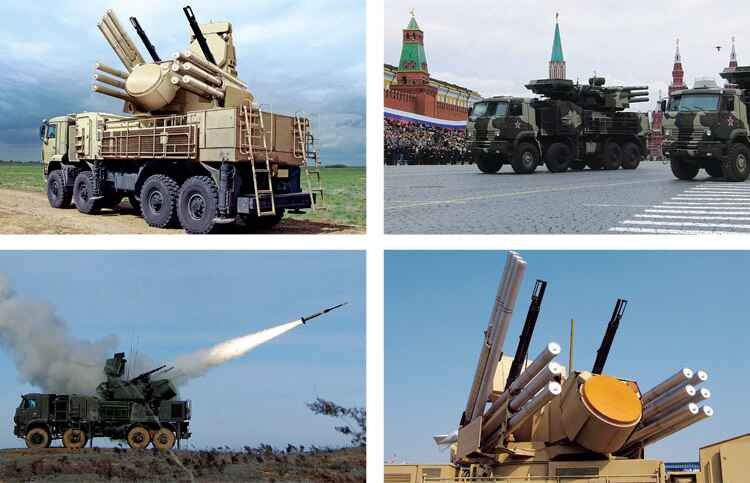
Former Pakistani Air Force officer Adil Sultan said that no defense system in the world can stop the attack of geographically connected rival countries 100%. However, he said that the damage can be less on this day. Adil Sultan said that in such a defense system, it is also important to know what kind of attack it is. If an air-to-ground missile is identified on different radars at the same time, it is a bit difficult to respond immediately. Whereas if we talk about surface-to-surface missiles or cruise missiles, their deployment is known, and you can keep an eye on them. The situation of air combat with a fighter plane is very different. He said that ground-to-ground missiles are also important for defense. In air or ground-to-ground defence systems, you know the capabilities of these missiles, their probable launch locations and probable trajectories, but in air warfare, we don’t know what can be fired from where, and you have to protect yourself from all sides
Pakistan tried a missile and drone attack on 15 military bases of India, but India foiled our attempt.
From the beginning of Operation Sindoor till now, in the entire sequence of events, the five big weapons received by Pakistan from China and North Korea are proving to be toys in front of India. What are these weapons? On which front in India did they foil them?
Sophia Qureshi said in a press briefing on 8 May that Pakistan was attacked with drones and missiles. The material of these weapons was recovered from many places, which is proof of Pakistan’s attack on us. Specialists accept that Pakistan has attempted to utilize a brief-range or journey rocket. The fabric of a journey rocket has been found in Dausa town of Hoshiarpur area of Punjab, on which ‘Pyar 15’ is composed. This rocket has been obtained by Pakistan from ChinaNow let us know which five big weapons Pakistan has from China and North Korea.
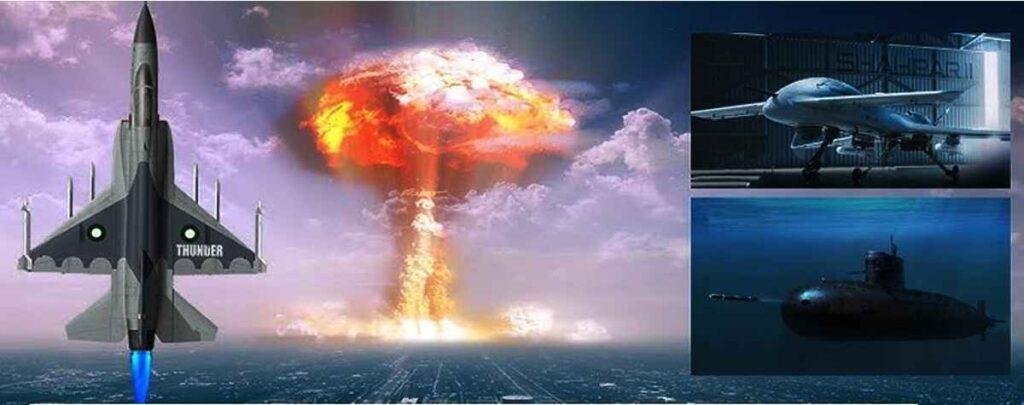
The first is the PL15E missile, and it is a long-range cruise missile of 145 km range whose speed is more than 5000 km per hour. Pakistan’s entire air defense is taken from China. It includes KA 27A radar system, PK 100B jammer, and SEAT 1005 Briefcase Cellular Portable German. It can be effortlessly caught on radar and can also track approaching war and warrior planes, but this framework may not halt India’s assault on the night of 6 and 7. Pakistan has powerful drones like Shahpur Barak Veer and Wing Long Tu, and CH4 from China. The most powerful of these is CH4. The Shahpur CH4 drone has been made by China Aerospace Science and Technology Corporation. In 2021, Pakistan Air Force bought five drones from China and 10 drones in 2024. Pakistan included it in the HAK 980 missile system on 14 October 2021. It is a long-range air-to-air missile system. Its range is 125 kilometers, and its maximum speed is 5180 kilometers per hour. It has been made by the Chinese company Qimi. A unit of this air defense system kept in Lahore was destroyed by India on Thursday. It could not even stop the attack on itself.
Pakistan has more than 150 JF-17 fighter jets whose combat range is 2000 km. It has S10 and weapons like laser-guided bombs, which can destroy the target in seconds. Pakistan’s fighter jets failed to stop these attacks, but Pakistan succumbed to India’s attack. On this, retired Lieutenant General Rameshwar Rai says that Pakistan’s M19P air defense system and JF-17 have not been tested till now. They are being tested for the first time. It cannot be said how capable they are in stopping attacks and retaliating. No,w let us understand what India has done to Pakistan. In a press briefing in Karnal, Sophia Qureshi said that our Integrated Counter and Air Defense System has rendered Pakistan’s missile and drone attacks ineffective. The entire network of Integrated Counter and Air Defense System works in three steps: identifying the threat, deciding the weapon of attack, and destroying the air threat. During this, S400 is also activated, and it has to be kept in mind that the enemy’s missile or drone is in the air. be destroyed in
F-16 sent after Chinese JF-17 failed: Desperate Pakistan broke the agreement with America, now big action can be taken on the attack with F-16
There is news of Pakistan’s F-16 fighter jet being shot down near the LOC, Line of Control, although the Indian service has not confirmed it yet. Pakistan has got it with strict conditions. The condition is that Pakistan will not use it against India. Why did Pakistan use F-16 against India even after the strict conditions of America? Will America take away all its fighter planes from Pakistan?
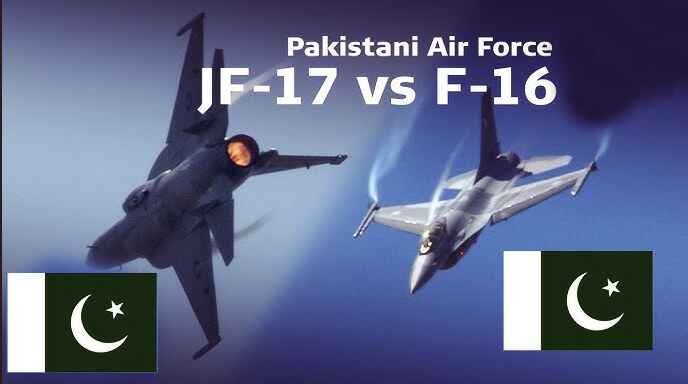
First of all, let us know whether Pakistan attacked India with F-16 fighter jets on the night of the 8th. Pakistan attacked Jammu and Pathankot with suicide drones. Along with this, F-16 fighter fighter India’s S400 missile defense system shot down an F-16 fighter jet along with all the Pakistani drones. This has been claimed in many media reports. However, Pakistani newspaper Dawn has called this fake, quoting Pakistan’s Information Minister Ataullah Tarar.
Now, let us know why Pakistan cannot use F-16 against India. There was a fighter and monitoring agreement between Pakistan and America, under which the use of F-16 in military operations against India is limited only to anti-terrorism and internal security operations. America monitors the use of aircraft and can take action on any violation. So, will America take away all F-16 fighter jets from Pakistan? After the Balakot air strike in 2019, Pakistan tried to enter the Indian border through F16 aircraft, then India complained about it to America, however, America did not take any action against Pakistan. In February this year, America gave 397 million dollars to Pakistan to maintain the aircraft, even then America had clearly said that Pakistan would use it only for counter terrorism and not against India. Now, in the latest case, if it is true after the use of 16 aircraft against India, then America can take action against Pakistan and can also completely ban its use. Now the question is, why did Pakistan violate the conditions of America? Retired Air Vice Marshal Omprakash Tiwari says that Pakistan’s JF-17, which India has already shot down, it is clear that Pakistan will not be able to face India with Chinese weapons. In such a situation, Pakistan used the best fighter jet, S16, at its airport. No,w let us know what other fighter jets Pakistan has apart from this. Pakistan has Mirage 3 and Mirage 4 fighter planes made in France, Tensei and J7 fighter planes made in China. Now let us know what options India has in front of Pakistan’s fighter plane and what is their specialty. India has 36 Rafale fighter planes purchased from France. Apart from this, India has indigenous Tejasvi. It has self-protection jammers that protect the aircraft from air and ground attacks. Jaguar and Mirage 2000, made in France, are also a big strength of the Indian Air Force. India used these aircraft during the 2019 strike. Apart from this, India has 21 more in 30.
Pakistan Drone Attack: In how many days will Pakistan’s economy be ruined? IND vs PAK | Pak Army
Tensions between India and Pakistan have escalated after the tragic attack in Kashmir in which 25 Indians lost their lives. Pakistan is already facing a security crisis and a struggling economy. In such a situation, what will the conflict’s impact be on Pakistan’s economy? Join us and learn what the geopolitical impact, possible military responses, and economic ramifications of this dispute. What can the future of South Asia look like?
On platforms like India-Pakistan Instagram, people of Pakistan are laughing and joking about it, but for once, let’s just cut the graph and talk about a reality check that if India-Pakistan is going to fight because of Pakistan’s Kavad Act, will Pakistan be able to afford this war? Does Pakistan have the capability to fight India? Let’s find out.

India and Pakistan have fought four wars so far, but the ground reality is that at present, Pakistan cannot afford a war. It has recently returned from the brink of bankruptcy and is still not out of danger. After the pandemic, Pakistan’s economy was completely shattered, and now it is surviving only on loans. If there is any military conflict with India, even if it is short-term, it will be disastrous for Pakistan’s economy. If we understand it in a little detail, if a country has to fight a war, then its financial condition should be very strong, but in the years after Covid, Pakistan’s economy has collapsed badly. Pakistan, which was once one of the poorest countries in South Asia 50 years ago, has become one of the poorest countries in South Asia, thanks to the mistake of making military dictatorship and cross-border terror a state policy. There was also political turmoil in Pakistan. There was an uproar in the country after Imran Khan’s arrest, and these surgeries were also increasing in Balochistan. In such a situation, Pakistan almost reached the state of default. Pakistan’s Planning Minister Ehsan Iqbal had appealed to the people to drink less tea because Pakistan was taking loans to buy tea. This statement clearly shows how few foreign reserves Pakistan had left with Pakistan. The 350 billion dollar economy was struggling. Inflation had reached an all-time high of 38.5% in 2023. Growth was going negative. Reserves were only for a few weeks. Reserves had fallen by 3.7% and interest rates had increased by 22%. Pakistan was facing a crisis for 5 years due to terror funding. Pakistan remained on the grey list of the IMF, which made it more difficult to get a loan. This economic crisis of Pakistan lasted so long that by 2023, Pakistan reached the verge of sovereign default. The GDP ratio was above 70%, which means that Pakistan’s loans were much more than its income, and in 2023, 42-50% of the government revenue was going into interest payments. At that time, only Sri Lanka and Nigeria were in a worse condition than Pakistan. Pakistan got a short-term financial bailout of $3 billion from the IMF, which gave it some relief from default. Saudi Arabia, UAE, and China also extended loans worth billions of dollars, but did Pakistan’s problems ease? No. Today, reports suggest that Pakistan’s economy is still faltering. Last month, a new deal of $1.3 billion was signed between the IMF and Pakistan, and the first review of the ongoing 37-month-old program has also been approved. If the board approves, Pakistan will get a loan of $1.3 billion under the 28-month-old Climate Resilience Loan Program. Dollars can be obtained. Also, one billion dollars will be released under the $7 billion belated program, which will make the total disbursement $2 billion. In the last 18 months, Pakistan has made significant progress in restoring macroeconomic stability and rebuilding confidence. Despite the global challenge, in February, WICH Ratings said that Pakistan’s external financial needs will remain very high next year. It has to pay external debt of more than $22 billion in the financial year 2025, out of which about $13 billion is lateral deposits. In the past, it was clearly said that seeking external financing is still a big challenge. Due to tight monetary policies, the World Bank also reduced Pakistan’s GDP growth forecast to just 2.7 percent this week. Pakistan will have to do many reforms to grow its economy, but political compulsions create obstacles in its way. A few days ago, Finance Minister Mohammad Aurangzeb assured the IMF.

Will Pakistan complete the reforms of its 7 billion dollar program? On the other hand, India has suspended the Indus Water Treaty. If India diverts the flow of water, it can cause great damage to Pakistan and its economy. Now, in such a situation, when Pakistan is continuously surviving on loans and is also finding it difficult to do the tough reforms of the IMF, then jumping into any military conflict will prove to be completely suicidal for it. Pakistan’s military establishment can use the Kashmir issue to get back its people, which has fallen a lot due to the military’s crackdown policies and insurgency failure in Balochistan and Khyber Pakhtunkhwa. So clearly, after the terror attack in Pahalgam, India-Pakistan relations have deteriorated even more. According to the report, two local operatives of Jammu and Kashmir were trained in Pakistan for the attack. India has responded to this attack with many tough steps, like the 1960 Indus Water Treaty was suspended, and an integrated check post was set up in Attari. was immediately stopped. All the Co-Visa Exemption Scheme results issued to Pakistanis were revoked with effect from 1st May. The strength of the diplomatic staff of both countries was reduced to 30, 55 earlier. After the Pahalgam attack, Defense Minister Rajnath Singh had assured the country of a clear response, which shows the possibility of military action. At the same time, Pakistan has also hardened its stand. According to major reports, between 24 and 25 April, Pakistan issued a notification for a surface-to-surface missile test in the Exclusive Economic Zone inside its coastline off the Karachi coast. Meanwhile, India is preparing for a military response. Seeing all this, it seems that the clouds of war are again hovering between the two countries. Pakistan Army Chief General Asif Munir glorified Pakistan’s Islamic ideology in a speech a few days ago and openly supported terror in Jainism. This makes it clear that Pakistan’s military establishment is currently in no mood to do anything. We do not want to adopt a conciliatory attitude, but the way Pakistan’s financial condition has deteriorated, if there is a war, then it will be like shooting Pakistan in the foot, but with its great confidence, it is seen as challenging India; it is a funny story for kids.
